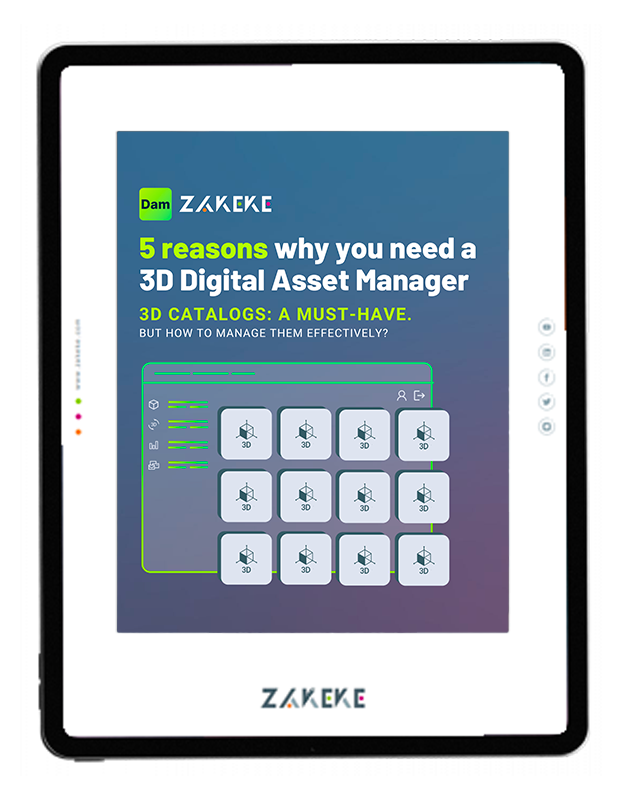It’s no secret that e-commerce is an ever-changing industry. The latest news? 2D images aren’t enough anymore. 3D model product viewers are slowly transforming online retail.
The time is nigh for brands to innovate and gain an edge over the competition that fails to keep up with the trend.
A 3D collection to showcase the product collection helps customers explore and evaluate the goods. The option is superior to traditional 2D image browsing, encouraging brands to turn pictures into 3d models.
An evolving market: How to meet growing customers’ expectations?
An evolving e-commerce market calls for new methods to meet or even exceed customer expectations. These days, shoppers have a plethora of choices where to do their shopping.
In addition, different brands try their best to implement new features to improve the customer experience.
Failure to meet growing expectations hinders success and sustainability. On the other hand, meeting customer expectations leads to a better brand reputation and new customers. Happy customers help brands thrive even in competitive markets.
The impact of 3D in e-commerce
3D product presentation has changed the visualization in e-commerce. The “revolution” is one of the most recent examples of how certain brands invest in innovation to keep up with the market demands and customer expectations.
Traditional photography struggles to capture different product angles. Or rather, product pages have to have multiple photos of the same product, which can take a while to go through for shoppers.
Thanks to new software and in-depth technologies, designers can create captivating product models. And not necessarily at high prices. Consumers browsing a product get a complete picture by rotating the model. An in-depth dive minimizes doubts and uncertainties from a shopper’s point of view.
3D models also enable creative freedom. Presenters have more flexibility to showcase their products. It’s easier to experiment with various lighting effects and environments. Customers are looking for immersive and new experiences and 3D can boost results for merchants.
Why your store has to switch from images to 3D models
Taking a leap and implementing a 3D modeling feature is a significant challenge. Whether it’s about 3D furniture, 3D shoes, or 3D glasses, 3D is always the way. The task can seem daunting. However, with the rise of new modern solutions in the SaaS and other markets, the challenge ahead is not that intimidating.
Besides, there are multiple benefits that brands can expect after the transformation:
- Better overall Customer Experience
Some customers might need time to adjust after switching to 3D models from photos. However, once they realize how much an improvement the change is, they will not look back.
Web-based augmented reality development lets site visitors browse 3D models directly on the website. There’s no need to download a third-party application or the like. The integration is seamless and user-friendly.
- Improved Customer Engagement
An immersive and interactive shopping experience encourages customers to engage with the brand and advertise it to their friends and family.
Fully exploring products from different angles leaves less room for hesitation and instills confidence while shopping.
Moreover, fewer shoppers have to worry about returning items because they did not meet their expectations. When you explore a product from different perspectives and inspect it, you are less likely to end up with a poor purchase.
Positive overall experience and high customer engagement naturally translate into higher conversion rates.
Combining 3D product modeling presentations with other modern e-commerce shopping features, brands benefit from increased conversions.
- Higher customer lifetime value
Happy customers are expected to return. A single purchase is profitable for a brand, but businesses want to build long relationships with their shoppers.
Repeat purchases are one of the metrics taken into account when talking about customer lifetime value.
One of the best ways to encourage repeat purchases is by implementing modern shopping features. 3D product models are the perfect example of an innovative approach to improving the shopper experience.
- Fewer expenses
Cost-effectiveness is one of the more underrated aspects of the 2D image to 3D model switch.
3D models reduce returns and expenses. Besides, technology is bound to become more accessible.
The cost of creating and implementing new 3D product models will drop and attract even more attention from brands.
How to turn pictures into 3D models?
As one would expect, there are dedicated tools to turn pictures into 3D models. Specific software to turn pictures into 3D models comes with different features depending on what brands are looking for.
Some software requires high-quality content images to transform, and the result may not be what one wants at first.
In addition, the concept is still relatively new, and the latest tools are known to have steep learning curves.
Some brands choose to go with CAD software as an alternative. It still works, though utilizing CAD without sufficient 3D modeling knowledge is more or less impossible.
Hiring a dedicated 3D artist makes sense (but it’s particularly expensive), particularly if a business believes that the 3D printing model should be one of the priorities to optimize the shopper experience.
Finally, there’s the option to collaborate with a 3D printing company that can also model your products in 3D.
The best alternative to convert images into 3D models: Zakeke 3D Asset Creator & Manager
3D e-commerce feels like the future of online shopping. With the rising popularity of virtual and augmented reality that contribute to various online experiences, it’s natural to assume that the rise will continue.
If you want to turn pictures into 3D models without relying on complicated software or expensive printing companies, Zakeke is the perfect solution for your 3D workflow.
Zakeke’s AI Visual Commerce platform lets you upload 2D images and receive low-poly 3D models without a hefty investment. And the best part? Zakeke offers a platform to easily manage all your 3D assets, make bulk changes and increase productivity. You can create, manage and easily share 3D assets on different channels, simply using a link or a QR code.
Time to shape the e-commerce future. Book a 10-minute demo and boost you Shopping Experience with Zakeke.

Laura Alexander
E-Commerce Content Manager
Laura Alexander is a freelance digital content manager and copywriter. Specializing in tech, ecommerce, and educational content, she had her work appear in publications like Omnikick, Pomodoneapp, Sortlist, and Price2Spy.














